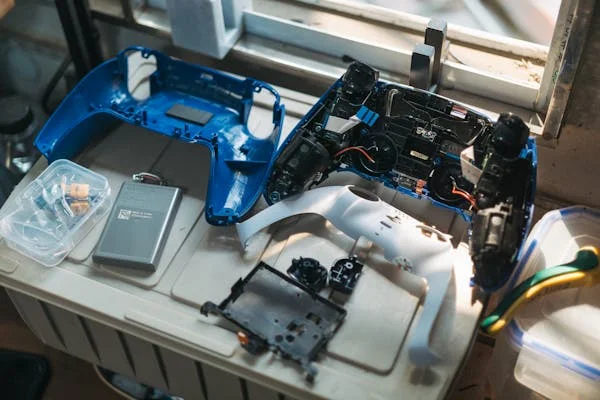Introduction
Gaming has evolved from a simple pastime to a serious hobby and, in some cases, a competitive sport. Many players immerse themselves in long gaming sessions, often forgetting the importance of taking breaks. As exciting and engaging as gaming can be, it’s crucial to understand the impact that extended gaming sessions can have on both your body and mind. This guide will explore why spacing out gaming sessions is vital for maintaining performance, health, and overall well-being.
Understanding the Impact of Long Gaming Sessions
Gaming, like any other activity, requires balance. Playing for extended periods without breaks can negatively affect your performance, health, and cognitive abilities. Below, we’ll break down the various effects of long gaming sessions:
1. Physical Strain and Discomfort
One of the most immediate effects of long gaming sessions is physical discomfort. Extended sitting can lead to:
- Back Pain: Prolonged sitting in the same position can put strain on the spine and muscles, leading to back pain and poor posture. Many gamers often overlook the importance of ergonomic seating and posture, which can exacerbate these issues.
- Eye Strain: Staring at a screen for long periods causes eye strain, leading to symptoms like dry eyes, headaches, and blurred vision.
- Reduced Circulation: Sitting for extended periods reduces blood flow, which can lead to leg cramps and, in extreme cases, more severe health issues such as deep vein thrombosis (DVT).
2. Mental Fatigue and Decreased Performance
While gaming can be mentally stimulating, long gaming sessions can lead to mental exhaustion. Players may experience:
- Decreased Focus: After prolonged gaming, concentration levels start to drop, making it harder to focus on tasks or make quick decisions.
- Slower Reaction Times: Fatigue can slow down a player’s reaction times, making them less effective in fast-paced games.
- Increased Mistakes: Mental exhaustion can lead to a higher rate of errors, affecting overall performance, especially in competitive gaming.
3. Health Risks of Sedentary Behavior
Extended gaming sessions, if not balanced with physical activity, can lead to serious health risks. Sedentary behavior is linked to:
- Obesity: Sitting for long periods can contribute to weight gain, as it reduces the opportunity for physical activity and metabolism.
- Cardiovascular Problems: Lack of physical movement can lead to poor cardiovascular health, including an increased risk of heart disease.
- Poor Mental Health: A sedentary lifestyle can negatively impact mental health, contributing to feelings of anxiety, depression, and stress.
The Importance of Spacing Out Gaming Sessions
Spacing out gaming sessions with breaks is essential to counteract the negative effects of long gaming periods. Here are several reasons why it’s beneficial:
1. Improved Performance
Taking regular breaks during gaming sessions helps maintain peak performance. Gaming can be mentally demanding, and just like any other task, continuous effort without rest will lead to burnout. By spacing out gaming sessions, players can:
- Maintain Focus: Short, regular breaks help rejuvenate the mind, ensuring that players stay focused and alert throughout the session.
- Enhance Reaction Time: Regular breaks ensure that players remain quick on their feet, enhancing their reaction times in fast-paced games.
- Boost Problem-Solving Abilities: Taking breaks gives players time to relax and recharge, helping them approach challenges with a fresh perspective and renewed problem-solving skills.
2. Better Memory Retention
Spaced-out practice, whether in gaming or other areas of life, has been shown to improve memory retention. The technique of “spaced repetition” allows players to absorb and retain more information over time. This is especially important in complex games that require remembering strategies, game mechanics, and in-game details.
- Memory Boost: Spacing out gaming allows players to reflect on what they’ve learned during the game, leading to better long-term retention.
- Strategic Planning: Taking breaks gives players the chance to mentally prepare for the next phase of the game, improving strategic thinking.
3. Health Benefits
Spacing out gaming sessions is also beneficial for your physical health. By taking regular breaks and limiting the amount of time spent gaming, players can:
- Reduce the Risk of Health Problems: Regular movement helps reduce the risk of heart disease, obesity, and other health issues linked to sedentary behavior.
- Improve Posture: Taking breaks to stretch and move around can improve posture and reduce back pain and discomfort.
- Enhance Eye Health: Stepping away from the screen during breaks can reduce the risk of digital eye strain, preventing headaches and blurred vision.
How to Implement Break Strategies During Gaming
To make the most of spaced-out gaming sessions, it’s essential to adopt effective break strategies. Here are some practical tips for implementing regular breaks:
1. Schedule Regular Breaks
The key to effective break strategies is consistency. Schedule breaks at regular intervals to ensure that you’re taking time away from the screen. The following strategies can help:
- The 30-Minute Rule: Aim to take a break every 30 minutes to an hour. This helps avoid fatigue while ensuring you maintain performance levels.
- Break Duration: Each break should last around 5-15 minutes. This gives you enough time to recharge without losing momentum.
2. Engage in Physical Activity
During your breaks, it’s important to incorporate some form of physical activity. This helps improve circulation, reduce muscle strain, and prevent fatigue. Consider these options:
- Stretching: Stretching is an easy way to release tension in your muscles and improve posture.
- Walking: A short walk around your room or house will help get your blood circulating, reducing the effects of prolonged sitting.
- Exercise: Simple exercises like squats, lunges, or push-ups during your break can also help combat the negative effects of sitting.
3. Stay Hydrated and Eat Healthy Snacks
Gaming can be mentally exhausting, and it’s important to keep your body fueled and hydrated. Drinking water during your breaks helps maintain hydration and energy levels. Additionally, eating healthy snacks can provide the necessary nutrients to keep you going. Here are some healthy snack ideas:
- Nuts: Packed with protein and healthy fats, nuts provide a great energy boost.
- Fruit: Fresh fruit like apples or bananas is an excellent choice for a quick and healthy snack.
- Granola Bars: A light snack that provides energy without the heaviness of junk food.
4. Practice Mindfulness
Taking a break from gaming is also an opportunity to engage in mindfulness activities. Mental relaxation during your breaks can help reduce stress and improve focus. Consider activities like:
- Deep Breathing: Practice deep breathing exercises to calm your mind and reduce stress.
- Meditation: Even a short 5-minute meditation session can help rejuvenate your mind and improve focus when you return to gaming.
Sample Break Schedule for Gamers
Creating a structured break schedule can make it easier to space out your gaming sessions. Below is a sample schedule:
| Session Duration | Break Duration | Activity Suggestions |
| 60 minutes | 10 minutes | Stretching, walking, hydration |
| 90 minutes | 15 minutes | Light exercise, healthy snack |
| 120 minutes | 20 minutes | Relaxation, mindfulness |
The key is to find a balance between gameplay and rest. Don’t feel pressured to follow a rigid schedule—adjust it based on your needs and the game you’re playing.
How to Know When You Need a Break
While having a set break schedule is beneficial, it’s also essential to listen to your body and mind. Here are signs that it’s time to take a break:
- Feeling fatigued: If you start to feel tired or mentally exhausted, take a break.
- Loss of focus: When your concentration begins to slip, it’s a good sign that your brain needs rest.
- Physical discomfort: If you’re feeling pain or discomfort, particularly in your back or eyes, it’s time for a break.
Conclusion
Spacing out gaming sessions is not just about improving performance but also about maintaining a healthy balance between entertainment and well-being. Taking regular breaks, engaging in physical activity, staying hydrated, and practicing mindfulness can all contribute to a better gaming experience. By implementing these strategies, you can continue to enjoy gaming while keeping your body and mind in top condition. Remember, gaming should be fun and sustainable, and spacing out your sessions will help ensure that you can keep playing for years to come.
FAQs About Spacing Out Gaming Sessions
Why is spacing out gaming sessions important?
Spacing out gaming sessions helps reduce physical strain, mental fatigue, and the risk of health problems. It ensures that players stay focused, perform better, and maintain a healthy lifestyle.
How often should I take breaks during gaming?
It’s recommended to take a break every 30-60 minutes. Each break should last around 5-15 minutes to refresh your mind and body.
What are the health benefits of taking breaks from gaming?
Taking breaks helps improve circulation, reduce back pain, and prevent eye strain. It also reduces the risk of obesity and cardiovascular issues related to prolonged sedentary behavior.
What should I do during my gaming breaks?
During breaks, consider stretching, walking, staying hydrated, or having a healthy snack. Engaging in physical activity and practicing mindfulness can also be beneficial.
Can spaced-out gaming improve performance?
Yes, spaced-out gaming allows players to stay focused, improve reaction times, and enhance memory retention, ultimately leading to better performance.
How do I know when to take a break?
Signs that you need a break include feeling fatigued, losing focus, or experiencing physical discomfort like back pain or eye strain. Listening to your body is key.



